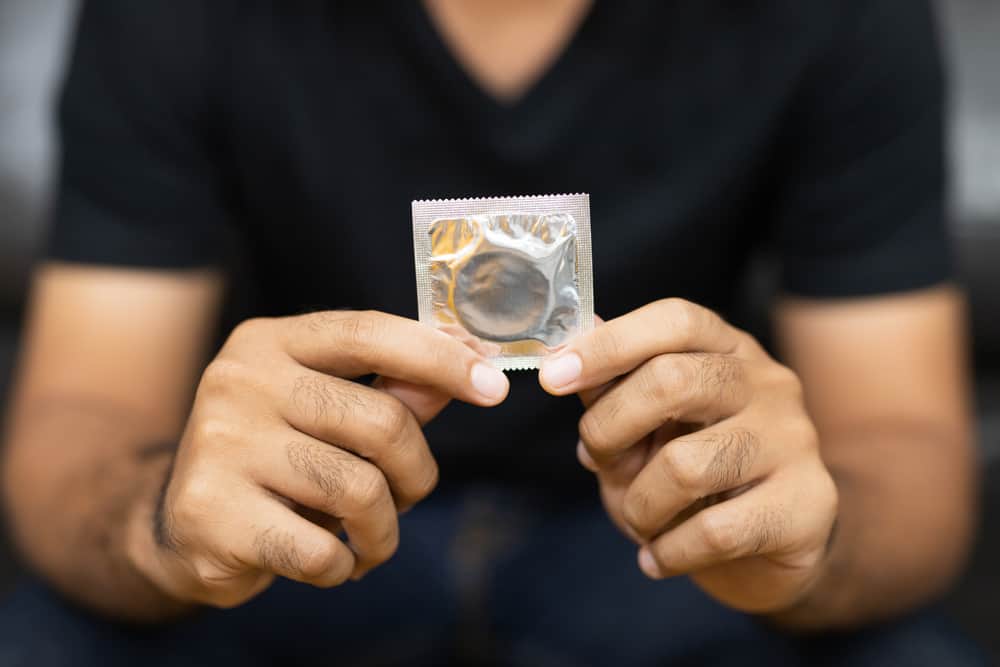How to Figure Out Which Birth Control is the Right Fit
When looking through the options of birth control methods, the different choices can be overwhelming. Not all birth control methods are equal. The effectiveness of each method can vary. Besides, it’s not like everybody is going onto birth control for the same reasons. The most obvious reason for looking into birth control would be to prevent pregnancy. But some women need to get on birth control for reproductive health reasons. In this article, we will cover the bases on the different methods of birth control and which could be the best fit for you and your lifestyle.
Abstinence

Abstinence is the only 100% birth control method. Shutterstock.
Let’s get this one out of the way first. We all know the gist of it: the safest option for birth control is abstinence, blah, blah, blah. But, it really is true. While this may not be the most fun option, abstaining from intimacy is the only 100% effective method for preventing pregnancy and any type of “social disease”. However, preaching abstinence and expecting for a teenager to not test those limits is just ignorant. Reproductive health education is incredibly important when making any of these decisions. So if you think teaching abstinence alone is the best way to prevent your teenager from running into trouble, you’ve got another thing coming. Research actually indicates that abstinence-only education as a state policy is ineffective in preventing teenage pregnancy and may actually be contributing to the high teenage pregnancy rates in the U.S. So if you decide that abstinence is the best option for you, great! However, make sure that you and others are well-informed before making decisions.
Fertility Awareness Methods (FAM)

Apps and new technology can make the FAM easier. Shutterstock.
Some of you may know this better as the “rhythm method”. This type of birth control works by tracking your fertility and menstrual cycle to avoid intercourse on your most fertile days. Nowadays, there are also apps that can help you track this so you’re not having to go too old fashioned with it. However, there are multiple ways to check your fertility throughout a cycle.
Tracking can be done via:
- calendar method
- temperature method
- cervical mucus method
Fertility Awareness Methods (FAM) are highly cost efficient because, unless you need to buy supplies or a monthly app subscription, it can almost be free. However, the downside to the affordability is that it has a high failure rate for preventing pregnancy. Not to mention, this also doesn’t solve the issue of communicable diseases you can get from a partner. Typically, this method is seen in long term relationships.
For an “As Needed” Basis

When used correctly, condoms can be effective. Shutterstock.
If you prefer the old fashioned method of having tools to help prevent pregnancy, let’s break those down. The preventative resources range from male external condoms to sponges. It’s important to keep in mind, that while the “perfect use” of these tools can have very high efficiency in preventing pregnancy and disease, they’re not always used perfectly. Some of these have an efficiency of up to 97-98%. But that is not always going to be the case. We will list the most common tools and their efficacy – starting from the lowest number that stands for the “typical use” all the way up to the high number, the “perfect use”.
- Internal Condom: 79-95% effective. These are latex-free, hormone-free polyurethane pouches that can be worn inside the vagina. They also greatly decrease the risk of pregnancy and transmission of disease. You can insert an internal condom a few hours prior to intimacy, but it could take some practice.
- External Condom: 86-97% effective. The classic. This is basically a baggie that goes over the penis and prevents ejaculation from entering the vagina. Great for preventing communicable diseases and pretty effective in pregnancy prevention. They are also extremely affordable. They come in a range of sizes, styles, and even flavors. Some people may be sensitive to certain spermicides on condoms as well, so make sure to test out the most comfortable styles.
- Diaphragm: 88-96% effective. This is a prescription, reusable birth control. A diaphragm is a soft, silicone disk that you saturate it with spermicide, then insert it into the vagina where it blocks the cervix. This option can be great if you’re sensitive to latex and want to go hormone free. Cost is dependent upon health insurance coverage. Warning: Diaphragms might not be for the rigorous lover; they can be displaced in the throes of passion.
There are many, many more options such as the sponge, cervical cap, and spermicide.
Scheduled and Long Term Birth Control

Discuss the possibility of long term birth control with your healthcare provider. Shutterstock.
Going on a prescribed, scheduled birth control can be the top choice for many reasons. Some people have hormonal imbalances that can make their cycles extremely difficult. Some people decide that birth control with the help of a medical professional can really take stress off of their personal lives. There are so many options when it comes to prescribed and scheduled birth control. With advancing medical technology, it’s easy to find something that suits your needs. Some people prefer the daily pill that doctors can adjust easily. While others may find it beneficial to have an implant so that you don’t even need to think about birth control for several years at a time. Like with anything, this can come with its own risks. Talk to your healthcare provider about the best option for you.






